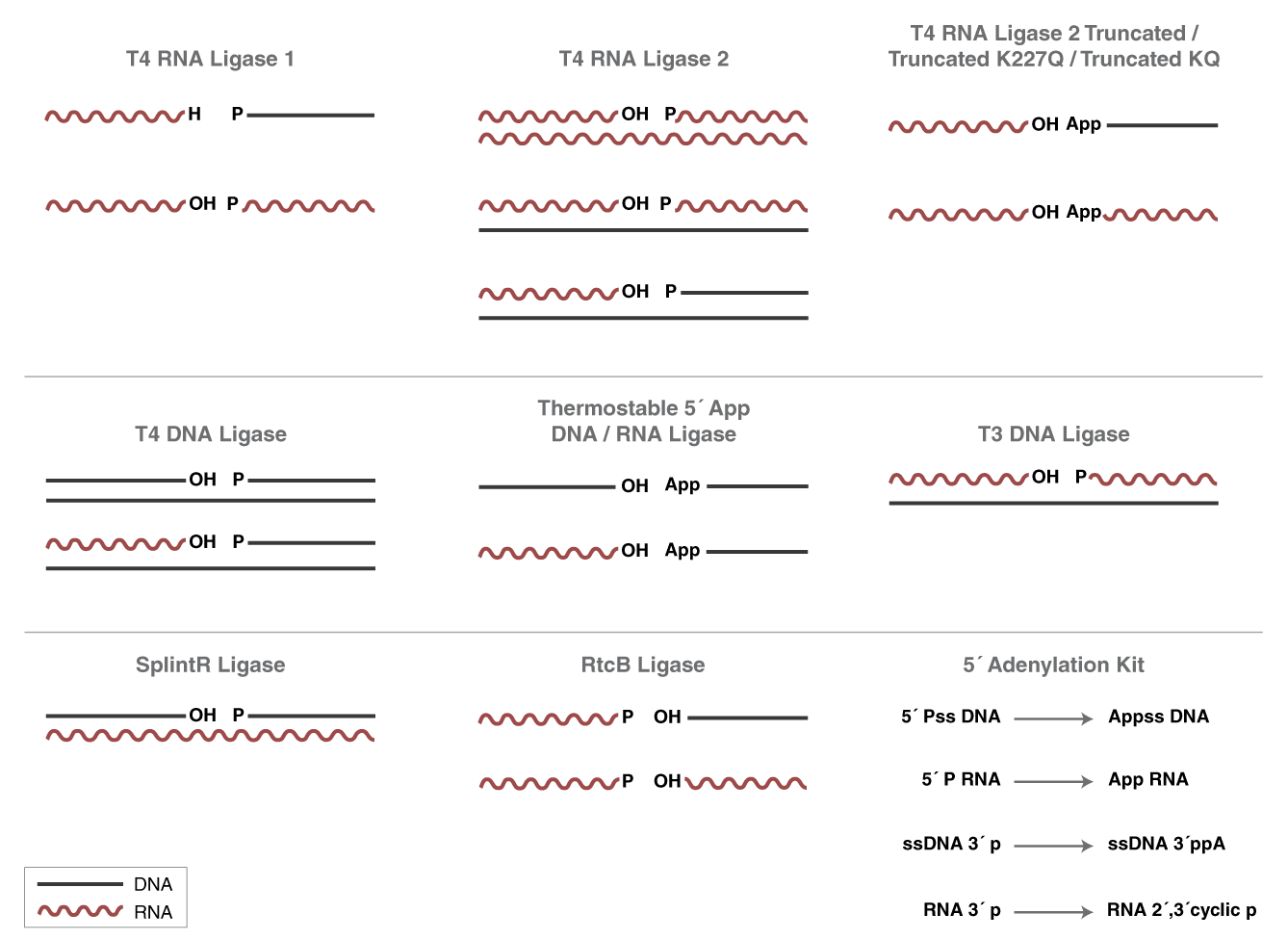
RNA Ligation
Choose Type:
- Protocol for ligation of the 3´ OH of RNA to the 5´ pre-adenylated DNA with T4 RNA Ligase 2 truncated K227Q (NEB #M0351)
- Protocol for Oligonucleotide Adenylation (NEB #E2610)
- RNA Circularization using T4 RNA Ligase 1(NEBM#0204)
- Protocol for ssDNA/RNA Ligation (NEB #M0319)
- Ligation of a DNA or RNA oligo to the 3’ end of long ssRNA using High Conc. T4 RNA Ligase 1 (NEB #M0437)
- 3´ End Labeling of RNA using T4 RNA Ligase 1
- Typical Protocol for RNA Ligation (NEB #M0458)
- Ligation protocol using SplintR® Ligase (NEB #M0375)
- Protocol for ligation of the 3´ OH of RNA to the 5´ pre-adenylated DNA with T4 RNA Ligase 2 truncated (NEB #M0242)
- RNA Ligase Selection Chart
- RNA Polymerase Selection Chart
- Avoiding Ribonuclease Contamination
Selection Tools
Usage Guidelines
Products and content are covered by one or more patents, trademarks and/or copyrights owned or controlled by New England Biolabs, Inc (NEB). The use of trademark symbols does not necessarily indicate that the name is trademarked in the country where it is being read; it indicates where the content was originally developed. The use of this product may require the buyer to obtain additional third-party intellectual property rights for certain applications. For more information, please email busdev@neb.com.
This product is intended for research purposes only. This product is not intended to be used for therapeutic or diagnostic purposes in humans or animals.



